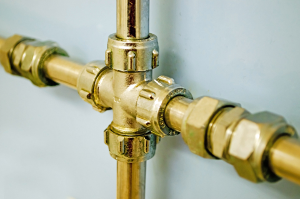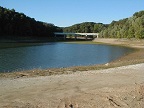Water Withdrawal Reports going Paperless ! Introducing Water Use e-Reporting
Beginning June 30, 2024, permittees with an active permit to appropriate and use waters of the state who are required to submit semi-annual or annual withdrawal reports, will now be able to submit reports digitally. Qualified accounts can be set up with an email address associated with an active water appropriation permit through our new e-Reporting portal site. For more information
you can email
[email protected]. To begin reporting electronically follow this link:
With Buildings Preparing to Reopen, It’s Time to Think About Stagnant Water and Health Risks (English Version)
Building closures during a pandemic reduce water use, leading to stagnant water inside plumbing. This water may be unsafe to drink or unsafe to use for other personal or commercial purposes. CDC and EPA recommend that building managers and owners become informed and take necessary steps to flush the building plumbing before reopening.
A building reopening and flushing infographic is linked here.
Preventing Water Quality Problems - Reopening Buildings
As Maryland prepares to reopen businesses and offices according to the '
Maryland Strong: Roadmap to Recovery' plan developed by the Hogan Administration in response to COVID-19, and as employees, staff, and visitors of various establishments are getting ready to return, many buildings that were either closed or partially closed due to the pandemic may experience water quality problems due to stagnant water in the premise plumbing. If your water system service area includes large building customers, MDE encourages you to inform these customers/building owners of some simple measures that can improve the quality of the drinking water in their buildings as normal operations resume. Below are links to a few documents that provide guidance and information on how to flush a building's stagnant water.
For many large buildings that normally housed office workers, food establishments, manufacturing, and other businesses, the water has remained stagnant in the building's plumbing during the past few months. The stagnant water in these buildings might increase the risk of bacterial growth, including coliform bacteria and Legionella, in the plumbing. Furthermore, when the stagnant water is in contact with plumbing (e.g., pipes, fixtures, etc.) for extended periods of time, elevated concentrations of metals, including lead and copper, may develop. As a preventive measure, MDE's Water Supply Program strongly recommends that the plumbing in each building be flushed prior to the reopening of the business.
The recommended flushing (please see links below) will help to remove potential bacteria, metals, disinfection by-products, and other contaminants that may have developed as a result of low or no use of water. These simple preventive actions will help protect the building occupants from unnecessary exposure to water quality problems that may be unsafe for consumption.
Please contact the Water Supply Program at (410) 537-3702 or
[email protected] if you have any questions.
Thank you for staying vigilant during the pandemic and continuing to serve your community with the highest quality of drinking water.
Building Flushing Guidance
-
The United States Environmental Protection Agency (EPA) Maintaining or Restoring Water Quality in Buildings with Low or No Use
-
Purdue University Center for Plumbing Safety—Flushing plans
-
Environmental Science, Policy, and Research Institute—Flushing guidance
-
Reducing risk to staff who are performing flushing
Required Cybersecurity Training for Operators - beginning July 1, 2025
Beginning July 1st, 2025 all operators renewing their certifications are required to view the EPA Cybersecurity Training video Cybersecurity 101 Training for Water Systems Webinar. The training can be accessed via this link:
Cybersecurity 101 Training. The video is thirty minutes in length, and can be viewed via computer or cellular device. When renewing, you must indicate you have sat for the training by checking the space on the renewal form affirming you have satisfied this requirement and, include the certificate you will earn in your renewal package. The training cannot be used to satisfy any other continuing education requirements
PFAS—MDE's Ongoing Evaluation of PFAS
Lead Testing in Drinking Water In Schools
 During the 2017 legislative session, the Maryland General Assembly passed House Bill 270: Testing for Lead in Drinking Water – Public and Nonpublic Schools, mandating all occupied public and nonpublic schools serving children in prekindergarten to grade 12 to periodically test for the presence of lead in all drinking water outlets. The Water Supply Program has developed a web page that provides guidance materials (e.g. sampling instructions, a list of State-certified laboratories, training presentation, etc.), State forms (e.g. deferral, waiver, parent notification, etc.), templates, and other helpful information. The web page may be accessed here:
http://mde.maryland.gov/programs/Water/water_supply/Pages/Testing-For-Lead-In-Drinking-Water-Public-and-Nonpublic-Schools.aspx
During the 2017 legislative session, the Maryland General Assembly passed House Bill 270: Testing for Lead in Drinking Water – Public and Nonpublic Schools, mandating all occupied public and nonpublic schools serving children in prekindergarten to grade 12 to periodically test for the presence of lead in all drinking water outlets. The Water Supply Program has developed a web page that provides guidance materials (e.g. sampling instructions, a list of State-certified laboratories, training presentation, etc.), State forms (e.g. deferral, waiver, parent notification, etc.), templates, and other helpful information. The web page may be accessed here:
http://mde.maryland.gov/programs/Water/water_supply/Pages/Testing-For-Lead-In-Drinking-Water-Public-and-Nonpublic-Schools.aspx
Climate Change Adaptation for Maryland Water Utilities
 Climate Change Adaptation for Maryland Water Utilities is a brochure that explains how your water system can better prepare for impacts from climate change.
Climate Change Adaptation for Maryland Water Utilities is a brochure that explains how your water system can better prepare for impacts from climate change.
Notice of Recent Applications Received
Water Appropriation Permits: The listing of notices below reflect new applications for withdrawals in excess of 10,000 gallons per day.
Indirect Potable Reuse Permit:
To review supplemental information and materials related to the City of Westminster IPR Application,
email Diana Kremer at
[email protected].
For More Information
For more information contact the Water Supply Program at 410-537-3702 or
[email protected].